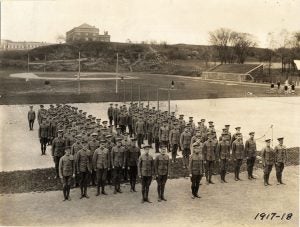
The first week of April 2017 marks the one hundredth anniversary of the United States entry into the Great War, or the First World War as it came to be called. On April 2, President Woodrow Wilson went before a joint session of Congress to request a declaration of war against Germany. The Selective Service Act was passed requiring all males between the ages of 21 and 31 (later increased to 18 through 45) to register for potential call-up for military service (the draft).
The Great War had a significant impact on Rensselaer and American higher education in general. The value of higher education, especially technical education, to the nation’s war effort was recognized and taken seriously for the first time. At Rensselaer the pressure of voluntary enlistments (over 30 students enlisted and left the Institute by May of 1917) and the draft cut civilian student enrollment from 623 in 1917 to 190 in 1918 (mostly students who had deferments from the draft or were foreign nationals).
The student body had been well aware of the conflict prior to America’s entry. In February 1917 the Secretary of the Institute’s rifle club had wired Secretary of War, Newton D. Baker, offering to raise two companies of mounted engineers from the Rensselaer community. Baker replied that he would give the proposal consideration, if necessary. In May 1917 the Institute trustees announced their intention to establish a course in military engineering, and classes in military training began in October for about 150 students.
Also in 1917 in order to conserve its rationed coal supply the Institute began two heatless days per week and closed several buildings. The library began collecting funds to send books to servicemen in France and the student body started a “Smoke Fund” to collect money for the purchase of tobacco products also to be sent to soldiers in France. With the exception of athletic events, most campus social activities were limited or curtailed, including the annual student and alumni pageants held each spring at graduation. 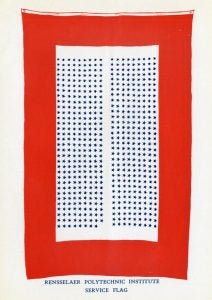
In 1918 the possible value of higher education in wartime was acknowledged by a new War Department rule that college and university students who were academically in the first third of their class would be granted draft deferments. This rule was criticized by former President Theodore Roosevelt for giving special treatment to students. Rensselaer’s President Palmer Ricketts (See Rickett's scrapbooks held in the Institute Archives) responded to Roosevelt in a letter to the editor of the Baltimore Sun arguing the case for educational deferments.
Members of the all-male faculty were also leaving for military service and in response to this in November 1918 the Institute appointed its first woman teacher, Miss Hazel Brennan, as an Assistant Instructor in Chemistry, but she left a year later. In 1919 Madame Marie De Pierpont was appointed as an instructor in French. She was named a full professor and appointed head of the language department in 1928. In 1918, possibly to compensate for the shortage of students, Institute trustee Alfred Renshaw (President Rickett’s brother-in-law), made a motion at the trustees’ December 5 meeting that women be allowed to attend the Institute. The motion lost. This was followed by a motion by trustee Henry W. Hodge, class of 1885, “Resolved, that at the present time it is not advisable to allow the admission of women students.” All votes were “yea’ except Mr. Renshaw.
In February 1918, the War Department created the Committee on Education and Special Training. The purpose of this committee was to assess the needs of the military branches. Identifying a drastic need for trained soldiers, the Student Army Training Corps (SATC) was created to provide special training for men entering the service through voluntary induction and was essentially an effort to encourage young men to receive both a college education and train for the military simultaneously.
The SATC officially began on October 1, 1918. It was located at 525 educational institutions and inducted 200,000 total students on the first day. Unlike the Selective Service Draft, enrollment in the SATC was completely voluntary. However, men who joined received the rank of private in the United States army. This was not a way of avoiding enlistment. A similar program was initiated to train students for naval service.
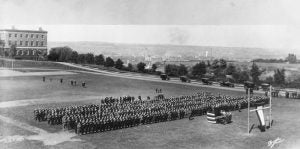
SATC had a short existence since the armistice ending the war was signed on November 11, 1918. However, for two months in the autumn of 1918 Rensselaer, like many other colleges, became literally a military camp, with 550 student soldiers and 120 student sailors under military authority. The students pursued a greatly condensed year-round curriculum, which consisted of about two-thirds of Rensselaer’s regular coursework, but was to be completed in two years.
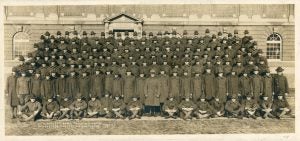
At least 838 Institute students and alumni were on active military service during the Great War. Of these, 426 were graduates, 186 were former students who left before receiving their degrees, and 226 were students who left the Institute to enter the service. The Polytechnic estimated that thirty-nine percent of Rensselaer students and alumni served on active duty.
Twenty-nine Rensselaer alumni and students died in service during the Great War. Eleven were killed in action, thirteen died of pneumonia, and five died in aircraft or vehicle accidents. The names of twenty-eight were inscribed on a bronze memorial plaque now located on the Approach. The name of Lieutenant Ransom S. Pattison, ’08, who left before graduation and was killed in France, is not included on the plaque. (The thirteen who died from pneumonia were likely victims of the devastating 1918-1920 flu pandemic which also killed 14 Institute students during the same period.)
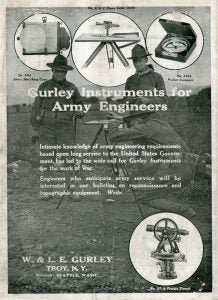
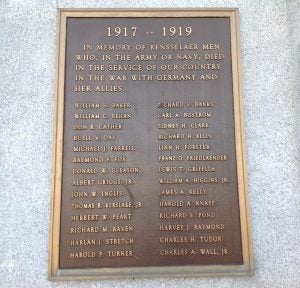
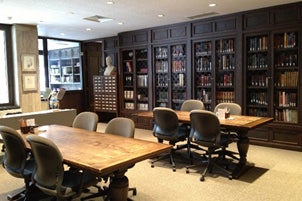
Comments
I just picked up a RPI Wilson Club small campaign pin. It's is 7/8" in diameter. Red print on white. Stained now. Do you have any info on it?
I'm RPI class of 76.
In reply to by egglel
Hi Steve, We will look into it and respond in an email. Thanks!
I always knew that our university has a very interesting history, but I was struck by the number of students who were active participants in the Great War! Undoubtedly, as the author said, this war turned the education system. It's a pity that so many young guys died in the war, and we are doing the great thing, when we do not forget them.